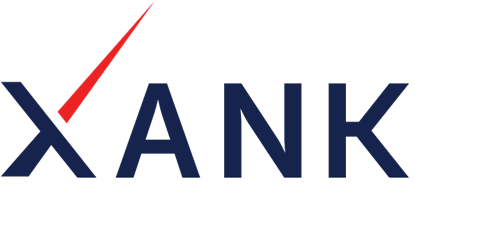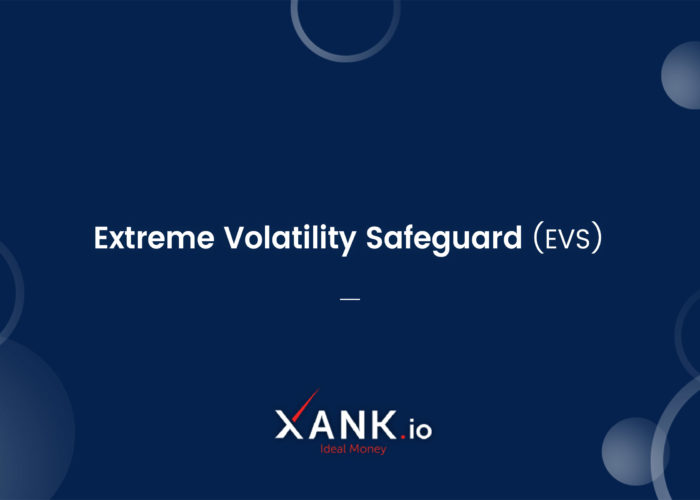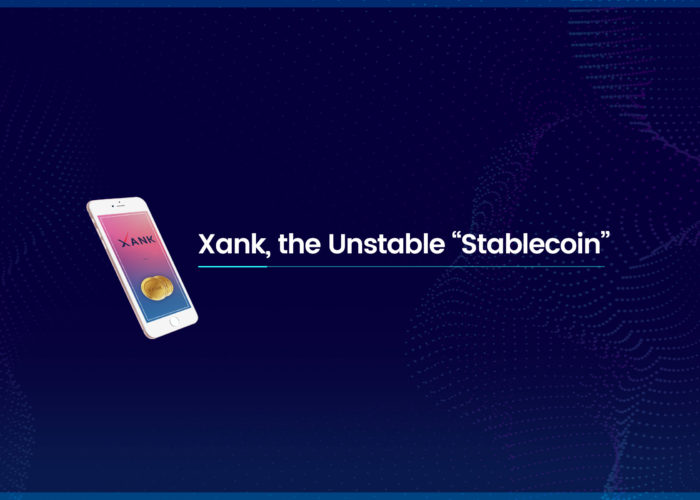E stablishing a currency price peg to any underlying asset traditionally involved holding a reserve of the underlying asset. Maintaining the size of the reserves has historically proved a challenge for pegged currencies, often resulting in a systemic collapse when the sovereign nation enters a prolonged downturn.
State-backed pegs can prolong the inevitable collapse through the use of taxpayer sponsored borrowing mechanisms where they issue bonds and run larger deficits. Early attempts at stablecoins have tried to maintain pegs using private funds. These large capital reserves, raised in the open market is testing these private currency pegs.
Drawing from the idea of autonomous self-funding networks, the Xank Reserve is able to fulfill its collateralization requirements on its own terms and does not hold reserves in an underlying asset. This shifts the focus away from ‘backing’ to ‘tracking’ to provide the necessary stability.
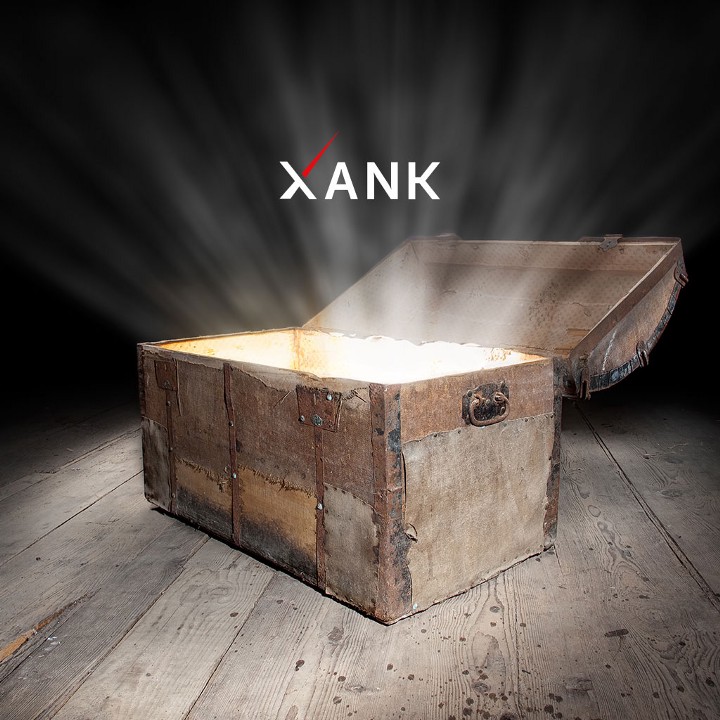
State-Backed and Private-Backed Pegs
Historically, state-issued currencies were pegged to reserves of precious metals including gold and silver. Even the value of the US Dollar was once pegged to the value of silver via minted coins known as the Silver Dollar. In essence, reserves of silver acted as the value stabilizing mechanism as the reserve could always be drawn on to back up any claims. In more modern times, many states held pegs to other currencies. Most famously, the Argentinian Peso along with other Latin American economies tried various pegs to the US Dollar, which all involved holding reserves of the US dollar to maintain a peg and create stability.
Early stablecoin attempts at establishing a peg rely on the same mechanism. These can be seen as private-backed pegs as they are created at the non-state level of the economy by corporations or individuals. To establish a pegged value for Tether, for instance, each Tether in circulation would need to be backed by an equivalent amount of US dollars. This reserve of US dollars would need to be held in an account that is auditable to eliminate any trust issues. Any part of this process that lacks transparency allows users to lose faith in the mechanism that keeps the whole scheme together. Furthermore, maintaining a direct peg means you have to track the demand for the currency in real time, and vary the supply of the cryptocurrency, also in real time — a process that requires deep capital reserves to remain responsive at all times.
Unlike a state-backed peg which is invariably backed by the taxpayers of each state, a private-backed peg relies on the good faith and positive liquidity of a single corporation, partnership of investors or even a single individual. This highly centralizes the currency to a single point of failure. Should any of the working parts of the peg not perform, the whole mechanism is exposed to the risk of catastrophic collapse.
History has seen the majority of state-backed pegs inevitably collapse as their economies came under sustained pressure to hold foreign reserves through testing economic times. If a nation state’s taxpayers cannot ultimately be relied upon to fund the required reserves of foreign capital, how likely is it that private-backed reserves can sustain themselves indefinitely? It can be argued that at least with a state-backed peg, a careful eye could study the health of the nation’s economy and predict future negative events that would destabilize a currency peg. With a private-backed peg, it’s anyone’s guess!
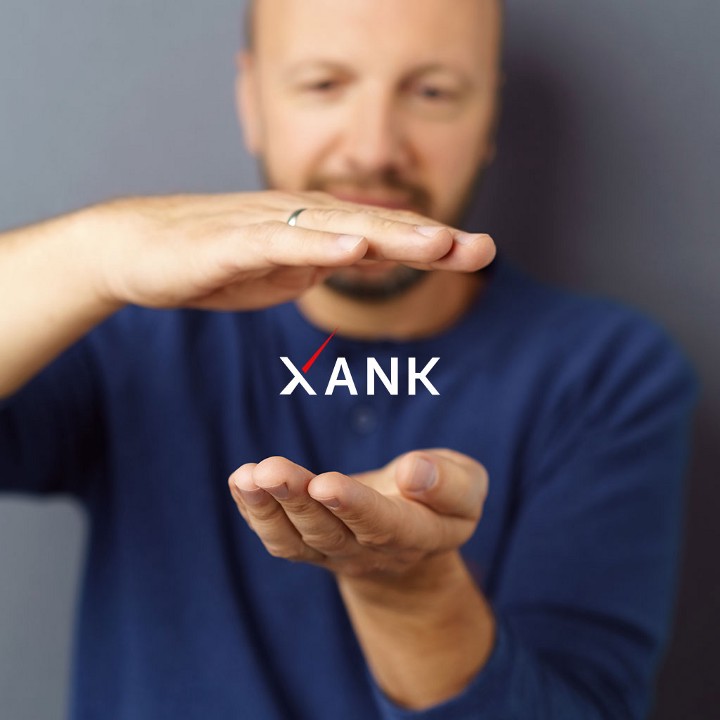
Autonomous Tracking To Replace Backing
Holding the underlying asset may work for some time, but it is a costly long-term venture that assumes the future looks very much like today. To take into account changing market conditions, you need a mechanism that can autonomously track a price and that can operate independently from the underlying asset. Relying on maintaining holdings in the underlying asset is simply not sustainable.
Tracking requirements are a whole lot simpler than backing requirements. Put simply:
Backing requires holding and maintaining a sufficient amount of the underlying assets to maintain a ratio and puts the backer at the mercy of market conditions that affect the underlying asset.
Tracking requires holding and maintaining a sufficient amount of native assets to maintain a ratio allowing the tracker to remain independent of market conditions that affect the tracked asset.
In essence, native reserves (established in the currency of the network) become equivalent to the reserves that would be required to maintain a backed peg. If you were to track the US Dollar for instance, instead of holding a reserve of US Dollars, you would hold a US Dollar equivalent amount of Xank coins.
To do this, the ‘required amount’ of Xank reserves needs to fluctuate in accordance with the Xank market price and the demand for Stable Pay transactions. Xank’s stablecoin functionality is only on demand and is priced at a market asset at all other times.
In summary, to achieve price tracking functionality, you need a reserve that is responsive to demand and supply conditions and that can calibrate the supply of reserve coins to match the requirements of the network.
In this way, the Xank Reserve is designed to establish and track a currency using its own reserves of Xank that are autonomously replenished algorithmically. At each block, a percentage of Xank coins will be set aside to fund the reserve. As the network grows indefinitely — one block at a time — the pool of funds in the Xank Reserve is set to deepen. As the network gains more use in the wider economy, the price of Xank coins is set to gain in value — further bolstering the value of the pool of funds in the reserve.
The underlying idea is for the reserve pool of funds to act as the network’s war-chest. Not only can the Reserve calibrate Stable Pay transactions, but it also exists in a see-saw relationship with the Xank Treasury where excess funds can be allocated according to emergent network needs.
Using native reserves allows the network to track external assets as required, and only when required. By extension, and at scale, this also allows for the network to expand to its ultimate potential — a reserve digital cryptocurrency that other assets are priced in.
